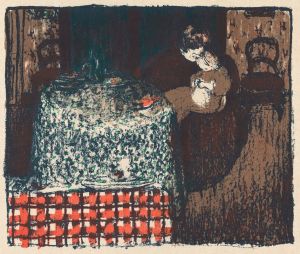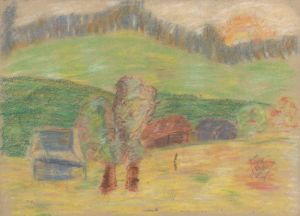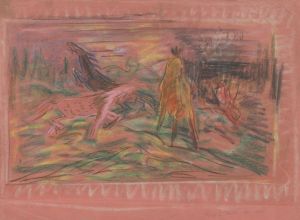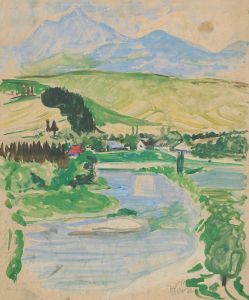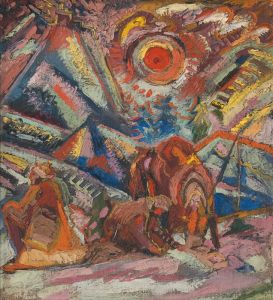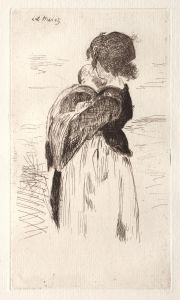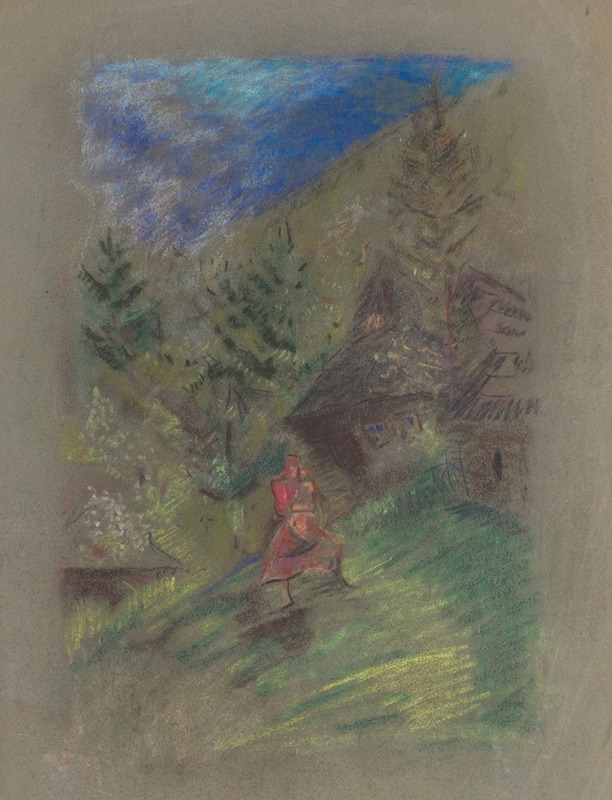
Woman with a Child in front of Cottages
A hand-painted replica of Arnold Peter Weisz-Kubínčan’s masterpiece Woman with a Child in front of Cottages, meticulously crafted by professional artists to capture the true essence of the original. Each piece is created with museum-quality canvas and rare mineral pigments, carefully painted by experienced artists with delicate brushstrokes and rich, layered colors to perfectly recreate the texture of the original artwork. Unlike machine-printed reproductions, this hand-painted version brings the painting to life, infused with the artist’s emotions and skill in every stroke. Whether for personal collection or home decoration, it instantly elevates the artistic atmosphere of any space.
Arnold Peter Weisz-Kubínčan was a Slovak painter born on February 3, 1898, in Dolný Kubín, Slovakia, and he is known for his contributions to modern Slovak art. One of his notable works is "Woman with a Child in front of Cottages," which exemplifies his unique style and thematic focus.
"Woman with a Child in front of Cottages" is a painting that captures a serene and intimate moment between a mother and her child set against the backdrop of rural cottages. The painting is characterized by its use of vibrant colors and expressive brushstrokes, which are hallmarks of Weisz-Kubínčan's artistic approach. The composition of the painting is carefully balanced, with the figures of the woman and child placed prominently in the foreground, drawing the viewer's attention to their interaction.
The background features traditional Slovak cottages, which are depicted with a sense of warmth and nostalgia. This setting not only provides a picturesque landscape but also reflects the artist's connection to his Slovak heritage and his appreciation for rural life. The cottages are rendered with a combination of detailed and impressionistic techniques, creating a harmonious blend of realism and artistic interpretation.
Weisz-Kubínčan's work often explored themes of family, community, and the natural environment, and "Woman with a Child in front of Cottages" is a prime example of these interests. The painting conveys a sense of tranquility and the simple joys of everyday life, which were central to the artist's vision. The tender relationship between the mother and child is depicted with sensitivity and care, highlighting the emotional depth that Weisz-Kubínčan brought to his subjects.
Arnold Peter Weisz-Kubínčan's career was tragically cut short during World War II. As a Jewish artist living in Slovakia, he faced persecution under the Nazi regime. In 1944, he was arrested and deported to a concentration camp, where he ultimately perished. Despite his untimely death, Weisz-Kubínčan left behind a significant body of work that continues to be celebrated for its artistic merit and cultural significance.
"Woman with a Child in front of Cottages" remains an important piece within Weisz-Kubínčan's oeuvre, offering insight into his artistic vision and the themes that were important to him. The painting is a testament to his skill as a painter and his ability to capture the essence of human relationships and the beauty of the Slovak countryside.
Today, Arnold Peter Weisz-Kubínčan's works are held in various collections and continue to be studied and appreciated by art historians and enthusiasts. His contributions to Slovak art are recognized as an integral part of the country's cultural heritage, and "Woman with a Child in front of Cottages" stands as a poignant reminder of his talent and the enduring power of his artistic legacy.





